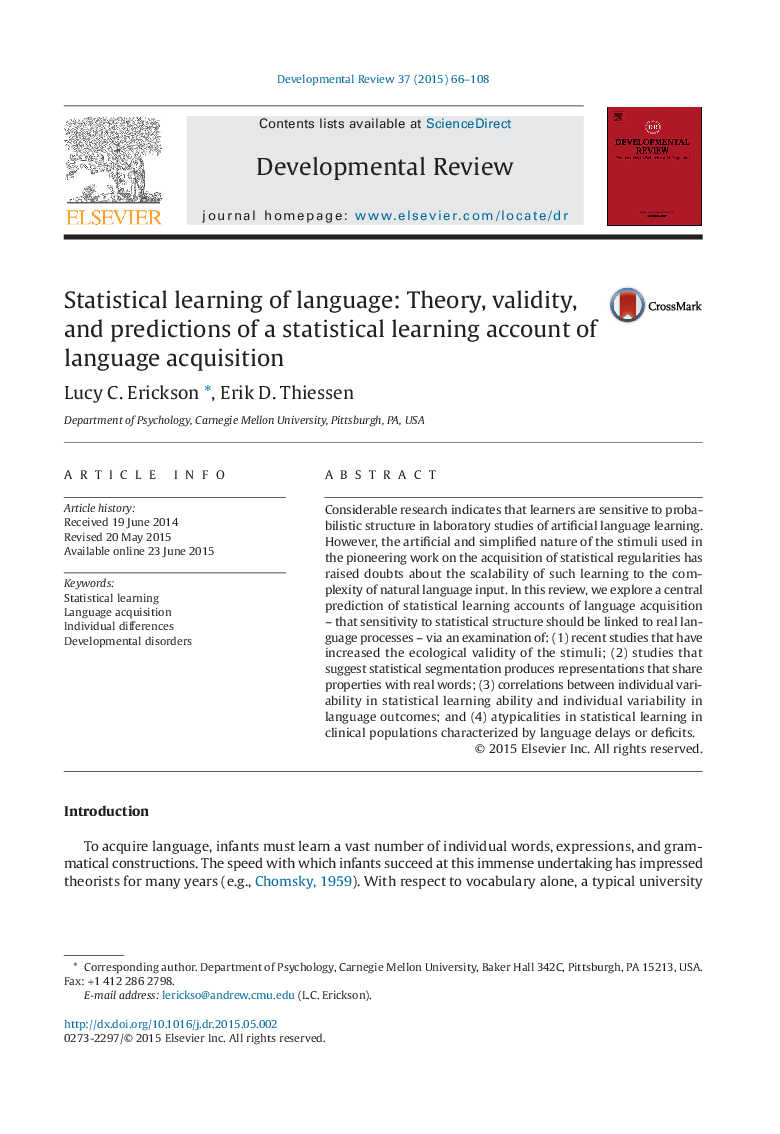| کد مقاله | کد نشریه | سال انتشار | مقاله انگلیسی | نسخه تمام متن |
|---|---|---|---|---|
| 353436 | 618797 | 2015 | 43 صفحه PDF | دانلود رایگان |
• Assesses claim that statistical learning contributes to language acquisition.
• Evaluates ecological validity of statistical learning experiments.
• Explores the explanatory power of statistical learning for developmental disorders.
Considerable research indicates that learners are sensitive to probabilistic structure in laboratory studies of artificial language learning. However, the artificial and simplified nature of the stimuli used in the pioneering work on the acquisition of statistical regularities has raised doubts about the scalability of such learning to the complexity of natural language input. In this review, we explore a central prediction of statistical learning accounts of language acquisition – that sensitivity to statistical structure should be linked to real language processes – via an examination of: (1) recent studies that have increased the ecological validity of the stimuli; (2) studies that suggest statistical segmentation produces representations that share properties with real words; (3) correlations between individual variability in statistical learning ability and individual variability in language outcomes; and (4) atypicalities in statistical learning in clinical populations characterized by language delays or deficits.
Journal: Developmental Review - Volume 37, September 2015, Pages 66–108
